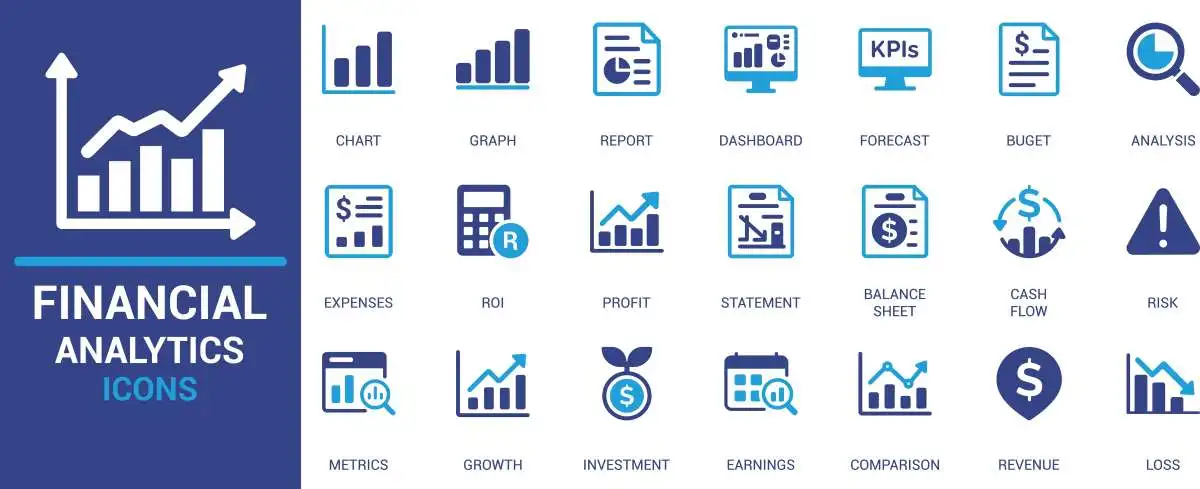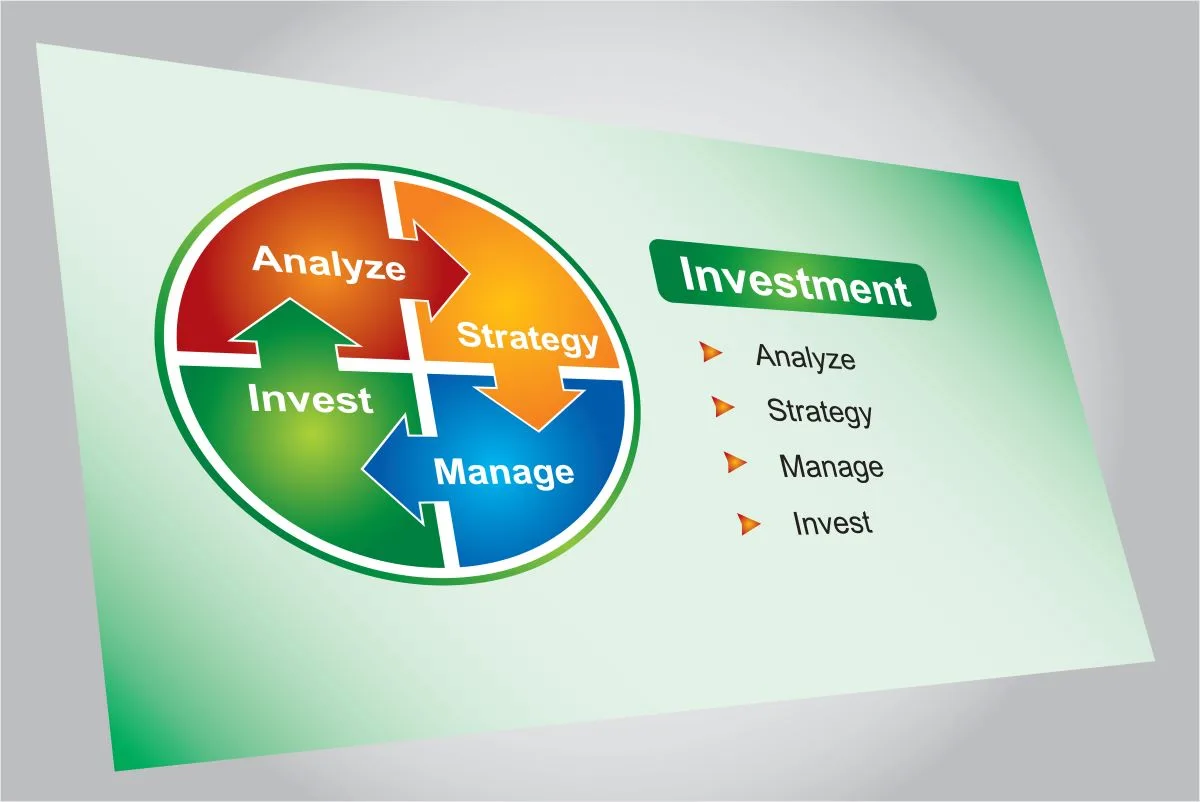Introduction to Financial Statement Fraud Red Flags
- Financial statement fraud red flags: Represent critical warning signals that expose a devastating reality: 10% of all publicly traded companies actively engage in securities fraud, according to a well-received 2023 University of Toronto study. This deceptive practice accounts for only 10% of detected fraud cases yet inflicts the most catastrophic financial damage, resulting in a median loss of $954,000 per incident.
- Deliberate Financial Deception: The intentional misstatement or misrepresentation of financial information creates substantial liability for securities class action lawsuits while destroying investor confidence across financial markets.
- Inadequate Controls: Nearly one-third of all fraud cases stem from inadequate internal controls, demonstrating how governance failures directly enable accounting fraud. The scope proves staggering—approximately half of all reported fraud cases worldwide occurred in the United States and Canada, totaling 895 reported cases representing 46% of global incidents.
- Enforcement Patterns: Regulatory enforcement actions involving financial statements reveal consistent manipulation techniques: improper revenue recognition dominates at 43%, followed by operational reserves manipulation (24%), inventory misstatement (11%), and loan impairment issues (11%). These sophisticated deception schemes create devastating consequences for investment decisions and market integrity.
- Investor Protection Through Knowledge: Understanding these warning signs becomes essential for protecting investments and avoiding the catastrophic effects of corporate fraud. The sophisticated techniques employed by companies—from implausible revenue growth patterns to suspicious auditor replacements—require systematic detection methods that this guide provides.
- Critical Detection Skills: This analysis equips investors with the analytical capabilities to necessary identify suspicious financial reporting patterns before they trigger devastating securities litigation. The techniques presented here enable enhanced due diligence and comprehensive evaluation of corporate disclosures, ultimately contributing to more robust and transparent capital markets.
Implausible Revenue Growth
- Revenue Manipulation Schemes represent the foundation of most financial statement fraud cases, with research indicating that 41% of companies misrepresent their financial reports. This deceptive practice creates artificial growth patterns that can devastate investor portfolios and trigger costly securities litigation when the truth eventually emerges.
Critical Warning Patterns That Signal Fraudulent Revenue
- Sophisticated Revenue Fraud: Employs several identifiable techniques that alert investors can detect through systematic analysis:
- Disproportionate Growth Rates: Revenue increases substantially exceeding industry averages, particularly during economic downturns when competitors struggle. Companies reporting consistent growth while their sector faces challenges warrant immediate scrutiny.
- Suspicious Timing Anomalies: Unusual revenue spikes occurring at reporting period boundaries, especially sudden jumps at the beginning or end of quarterly periods. These patterns often indicate channel stuffing or premature revenue recognition.
- Cash Flow Disconnects: Rising revenue without corresponding cash flow growth represents the most reliable indicator of potential manipulation. Companies can manipulate accounting entries, but cash flow ultimately reveals the truth about actual business performance.
- Quarter-End Performance Spikes: Dramatic performance improvements specifically in final reporting quarters suggest potential manipulation to meet analyst expectations.
- External Verification Discrepancies: Companies whose quarterly Google search volume ranks in the bottom quartile while reported revenue growth ranks in the top quartile exhibit 165% higher odds of subsequently restating their initial reported revenue. This external metric provides verification outside management control.
- Industry Benchmark Analysis: Research demonstrates that the difference between a company’s revenue growth and industry revenue growth serves as the most reliable fraud indicator. Performance that appears “too good to be true” relative to sector peers deserves heightened skepticism.
The Devastating Consequences of Revenue Manipulation
- Revenue manipulation creates substantial liability for securities class action lawsuits through multiple mechanisms that destroy shareholder value:
- Financial Deception: Premature revenue recognition and fictitious sales schemes create false impressions of profitability, misleading investors about actual growth prospects and financial health. These practices directly violate securities laws and trigger regulatory enforcement actions.
- Strategic Misallocation: Companies overstating performance often wrongly allocate resources based on inaccurate financial capabilities, creating long-term operational challenges. This dangerous cycle requires increasingly aggressive accounting tactics to maintain fraudulent growth illusions.
- Governance Breakdown: Consistent growth reporting during industry downturns frequently indicates cookie jar reserve manipulation—artificially smoothing earnings by holding back sales during profitable periods to boost performance during challenging times. These practices violate accounting standards and securities regulations.
- Correlated Risk Indicators: Companies exhibiting revenue manipulation typically display additional suspicious behaviors: accounts receivable growing disproportionately to revenue, insufficient bad debt allowances, and unusual non-recurring transactions. These accompanying patterns strengthen evidence of potential fraud.

Systematic Detection Methods for Revenue Fraud
- Professional Analysis: Requires comprehensive evaluation using proven detection techniques:
- Financial Ratio Examination: Compare current performance against historical patterns, industry benchmarks, and economic conditions. Essential relationships include:
- Sales versus cost of goods sold ratios—these metrics typically move together
- Revenue growth correlation with operational cash flow generation
- Accounts receivable growth alignment with revenue increases
- Days sales outstanding acceleration beyond industry peer performance
- Industry Performance Benchmarking The most effective fraud detection involves evaluating revenue growth differentials against sector performance. Companies reporting results significantly exceeding industry averages without clear operational justification require comprehensive investigation.
- Financial Statement Pattern Analysis Critical warning signs in financial statements include:
- Elevated accrued revenue or unbilled receivables levels
- Substantial discrepancies between EBITDA and operating cash flow
- Consistent achievement of analyst expectations by narrow margins
- Gross margin improvements lacking corresponding business model changes
- External Data Verification Google Trends analysis provides valuable verification beyond management control. Companies reporting 15% sales growth while experiencing 15% search volume decreases present significant red flags requiring further investigation. This external validation proves particularly valuable for detecting manipulation.
- Documentation Requirements: Maintain detailed records of all suspicious findings and unexplained discrepancies. Companies reporting performance defying market conditions or industry trends often exhibit implausible growth representing early warning signals of potential accounting fraud.
Expense and Revenue Mismatch: When Financial Timing Reveals Deception
- Expense Recognition Manipulation: Creates one of the most insidious forms of financial statement fraud by systematically distorting the relationship between costs and corresponding revenues.
- Deliberate Practices: Companies engaging in these practices deliberately violate the fundamental matching principle to create artificial profitability improvements that mislead investors and trigger devastating securities class action lawsuits.
- The Matching Principle Foundation: Maintaining appropriate expense recognition timing in alignment with corresponding revenue forms the cornerstone of reliable financial reporting. When this relationship becomes corrupted through intentional manipulation, the resulting financial statements no longer reflect economic reality and create substantial exposure to regulatory enforcement actions.
Critical Warning Patterns That Signal Manipulation
- Revenue-Expense Disconnections: Manifest through systematic patterns that careful analysis can detect before they escalate into major fraud cases:
- Timing Discrepancies: Revenue rises while cash flow remains stagnant or decreases, typically indicating fabricated sales or inappropriate revenue recognition practices. Companies may recognize expenses in different periods than their related revenues, creating artificial profit improvements that violate basic accounting standards.
- Unexplained Financial Fluctuations: Sudden changes in revenues or expenses occurring without corresponding operational activities often signal deliberate manipulation. These patterns become particularly suspicious when certain expense categories decrease unusually despite revenue growth.
- External Verification Contradictions: Companies whose quarterly change in Google Trends search volume ranks in the bottom quartile while reported revenue growth ranks in the top quartile demonstrate 165% higher odds of subsequently restating their initial reported revenue. This external metric provides crucial verification because it remains outside management control.
- Suspicious Documentation Patterns: Round expense figures ($100.00, $250.00) appearing frequently across financial reports may indicate estimation or fabrication rather than actual documented costs. Excessive use of “miscellaneous” expense categories often conceals inappropriate purchases requiring investigation.
Why These Mismatches Create Substantial Legal Exposure
- Fundamental Accounting Violations: Expense and revenue mismatches directly contravene the matching principle, which mandates that expenses be recognized during the same period as their related revenues. This violation transforms financial statements from reliable business indicators into misleading documents that can trigger securities litigation.
- Earnings Management Opportunities: These mismatches provide management with powerful tools for manipulating reported performance. Decision-makers can deliberately shift expenses between reporting periods to smooth earnings, meet analyst expectations, or trigger executive compensation bonuses—all practices that distort actual operational efficiency.
- Systemic Governance Failures: Research demonstrates that firms engaging in expense manipulation typically exhibit broader control weaknesses, including disproportionate accounts receivable growth and insufficient bad debt allowances. These companies frequently employ “common channels for upward earnings management” across multiple financial statement areas, creating comprehensive deception schemes.
- Subjective Judgment Vulnerabilities: Expense recognition offers particularly attractive manipulation opportunities because many expense-related items depend on management estimates for warranty provisions, doubtful accounts, and depreciation schedules. These subjective areas provide extensive room for inappropriate adjustments while appearing legitimate to casual observers.
Systematic Detection Strategies for Investment Protection
- Ratio analysis and trend evaluation provides the foundation for identifying problematic expense-revenue relationships through mathematical precision rather than subjective assessment.
- Financial Relationship Analysis: Calculate expense-to-revenue ratios across multiple periods to identify unusual variations. Revenue growth rates should generally parallel expense growth rates unless clear operational changes justify divergence.
- Timing Verification Procedures: Examine whether expenses align with their corresponding revenues in appropriate periods. Unusual expense deferrals or accelerations without clear business justification warrant immediate investigation, particularly when occurring near period-end dates.
- Category-Specific Scrutiny: Compare warranty expenses against historical patterns and industry standards. Evaluate bad debt allowances relative to accounts receivable growth patterns. Review depreciation methods and useful life assumptions for potential manipulation.
- Third-Party Validation Methods: Cross-reference reported business activity with external data sources including web traffic patterns and search trends. Analyze expense reports across similar employee roles to identify statistical outliers.
- Continuous Monitoring Framework: Regular audits—both systematic and random—create essential safeguards against expense manipulation. Categories requiring substantial management judgment demand heightened analytical attention due to their elevated manipulation potential.
- Professional Skepticism Application: Companies achieving exceptional margin improvements without corresponding operational changes require comprehensive investigation. Sudden expense pattern modifications rarely occur naturally without substantial business model adjustments or technological innovations that management can clearly document and explain.
Frequent Changes in Accounting Methods: Manipulation Through Policy Shifts
- Consistent Application: Consistent application of accounting principles forms the cornerstone of reliable financial reporting and market transparency. Frequent changes in accounting methods represent a sophisticated form of financial statement fraud that enables management to manipulate reported results while maintaining an appearance of regulatory compliance.
- Pattern Recognition: Financial analysts and auditors identify frequent accounting policy alterations as critical indicators demanding immediate investigation and enhanced scrutiny.
Critical Warning Signs: Identifying Suspicious Policy Changes
- Accounting Method Manipulation: Several distinct patterns reveal potentially fraudulent accounting method changes:
- Unexplained Policy Shifts: Changes implemented without clear business justification or adequate explanation in financial statement footnotes. These alterations often coincide with performance pressures or earnings shortfalls.
- Multiple Method Changes: Companies repeatedly altering revenue recognition, expense classification, or asset valuation methods across consecutive reporting periods. This pattern suggests systematic manipulation rather than legitimate business evolution.
- Strategic Timing: Accounting changes implemented precisely when they improve reported financial results. Management may switch depreciation methods to reduce expenses or alter revenue recognition to accelerate earnings.
- Retroactive Applications: New accounting policies applied retroactively that significantly impact previously reported results. These adjustments can fundamentally alter historical performance comparisons.
- Industry Divergence: Adoption of accounting policies that deviate from established industry standards and peer company practices. Such divergence often signals attempts to gain competitive advantages through accounting rather than operational improvements.

- High-Risk Change Categories: Accounting experts recognize that suspicious changes typically target specific vulnerable areas:
- Revenue Recognition Policies: Altering timing criteria for recognizing sales, particularly from conservative First-In, First-Out (FIFO) methods to aggressive Last-In, First-Out (LIFO) approaches without valid economic justification.
- Depreciation Methods: Switching from accelerated to straight-line depreciation or extending asset useful life estimates beyond reasonable industry benchmarks.
- Asset Valuation Practices: Modifying inventory valuation methods or fair value measurements that directly impact balance sheet strength.
- Expense Recognition Techniques: Adjusting capitalization policies to defer current-period costs into future periods.
Why Frequent Accounting Changes Signal Fraud Risk
- Financial Statement Comparability: These changes create substantial risks that extend far beyond simple accounting complexity.
- Undermined Comparability: Frequent policy changes make evaluating company performance trends extraordinarily difficult. Investors lose the ability to assess whether improvements reflect genuine operational progress or accounting manipulation.
- Manipulation Opportunities: Management gains powerful tools for artificially inflating revenues, understating expenses, or manipulating critical financial ratios. These techniques create false impressions of financial stability that can trigger investment decisions based on misleading information.
- Regulatory Violations: Accounting rules require preferability analysis to justify voluntary changes between acceptable methods. The Financial Accounting Standards Board (FASB) presumes consistent application unless new Accounting Standards Updates mandate changes. Frequent voluntary changes without demonstrable reporting quality improvements violate these fundamental principles.
- Broader Governance Failures: Companies employing frequent accounting changes typically exhibit additional suspicious behaviors: growing accounts receivable disproportionate to revenue growth and insufficient bad debt allowances. This pattern indicates systemic internal controls weaknesses that enable widespread manipulation.
Detection Methods: Systematic Analysis for Fraud Prevention
- Professional Skepticism: Identifying problematic accounting method changes requires comprehensive analytical approaches:
- Financial Statement Footnote Analysis Examine the “Accounting Policies” section with particular attention to:
- Detailed disclosures about method changes and their business rationale
- Impact assessments showing how changes affect key financial metrics
- Comparisons with previous period disclosures to identify inconsistencies
- Preferability Justification Verification Companies must demonstrate new methods provide superior financial reporting. Evaluate whether:
- Management provides compelling rationale aligned with business circumstances
- External auditors issued preferability letters supporting the changes
- Justifications match industry practices and economic conditions
- Impact Magnitude Assessment Calculate the significance of accounting changes on financial performance:
- Compare results under old versus new methods
- Analyze timing relationships between changes and performance pressures
- Document whether changes consistently improve reported results
- Industry Benchmark Comparison Assess policy alignment with sector standards:
- Identify deviations from peer company accounting methods
- Flag adoption of unusually aggressive accounting techniques
- Question policies that provide competitive advantages through accounting rather than operations
- Disclosure Quality Evaluation Review the completeness and transparency of change disclosures:
- Verify clear explanations of change nature and reasons
- Confirm disclosure of effects on income, net assets, and earnings per share
- Ensure appropriate retrospective application for accounting principle changes
- Regulatory Oversight: Independent auditors serve crucial roles in evaluating accounting method changes. Companies making questionable alterations may face increased audit scrutiny or qualified audit opinions. Securities and Exchange Commission regulations require preferability letters from independent accountants for voluntary accounting principle changes.
- Comprehensive Assessment: Effective fraud detection combines quantitative analysis with qualitative evaluation of management credibility and corporate governance quality. The frequency, timing, and impact of accounting changes—alongside management’s transparency in providing explanations—reveal critical insights into potential financial statement fraud.
Unusual Related-Party Transactions: Concealing Corporate Deception Through Complex Relationships
Related-party transactions create dangerous opportunities for financial statement fraud when sophisticated companies exploit legitimate business relationships to manipulate their reported financial performance. These arrangements between entities with close connections require intensive scrutiny because they frequently circumvent the natural market forces that typically prevent deceptive accounting practices.
Critical Warning Signs of Fraudulent Related-Party Arrangements
- Fraudulent related-party schemes exhibit distinct patterns that alert investors can identify through careful analysis:
- Questionable transaction timing: Companies frequently structure unusual fund transfers among related accounts near reporting period ends to artificially enhance quarterly results. These manipulations often involve the same principals across multiple entities designed to obscure their true relationship.
- Price Manipulation: Transactions involving goods or services at prices dramatically different from prevailing market rates create artificial profits or losses depending on management objectives. Companies may purchase assets from related parties at inflated prices to boost the seller’s revenue or acquire them at below-market rates to enhance their own margins.

- Deceptive Payment Arrangements: Sales featuring unusual rights of return, extended payment terms not offered to independent customers, or “bill and hold” arrangements that recognize revenue without actual delivery. Interest-free financing between related parties eliminates normal commercial lending standards and repayment requirements.
- Shell Company Transactions: Multiple high-value payments between shell companies lacking apparent legitimate business purpose, particularly those involving round numbers that suggest artificial structuring rather than genuine commercial activity. Complex ownership structures utilizing trust arrangements, multiple jurisdictions, or intricate corporate hierarchies deliberately obscure the true relationships between transacting parties.
- High-Risk Transaction Categories: Uncollateralized loans, subsequent repurchase agreements for previously sold goods, and advancing company funds to cover otherwise uncollectible receivables represent particularly dangerous arrangements. Transactions involving numerous beneficiaries receiving funds through offshore financial centers often indicate systematic efforts to hide the true nature of these relationships.
The Devastating Consequences of Related-Party Manipulation
- Related-party fraud creates substantial securities litigation exposure through multiple mechanisms that have destroyed major corporations throughout financial history.
- Corporate Scandals: The collapse of Enron, Tyco International, and Refco demonstrates how related-party manipulation can trigger catastrophic securities class action lawsuits while obliterating shareholder value. These cases established that related-party arrangements lacking economic substance represent sophisticated accounting fraud techniques designed to deceive stakeholders about fundamental business performance.

- Financial Statement Distortion: Companies utilize related parties to inflate earnings through transactions lacking genuine commercial purpose, particularly those occurring immediately before period-end reporting. Asset diversion schemes enable management to siphon company resources through preferential, undervalued, or completely fraudulent transactions with disclosed or undisclosed related entities.
- Control Circumvention: Shell companies with unclear business purposes, recently formed entities, and transactions lacking proper documentation create deliberate opacity that defeats internal controls and regulatory oversight. These arrangements enable management to manipulate operational cash flow metrics, misleading investors about actual business performance and financial health.
- Governance Breakdown: Companies employing unusual related-party transactions typically display additional suspicious behaviors, including accounts receivable growth disproportionate to revenue increases and insufficient allowances for bad debts. This pattern reveals broader corporate governance failures that create environments where financial statement fraud can flourish undetected.
Systematic Detection of Related-Party Manipulation
- Identifying fraudulent related-party schemes requires comprehensive analysis combining document review, pattern recognition, and external verification techniques:
- Document Analysis Framework Review financial statement footnotes detailing all related-party relationships and transactions, comparing disclosed parties against corporate records to identify undisclosed relationships. Examine transaction terms for unusual provisions or significant deviations from standard commercial practices that suggest preferential treatment.
- Transaction Pattern Investigation Flag dealings occurring at period-end or irregular intervals designed to manipulate reported results. Identify transactions lacking clear business purpose, especially those involving suspiciously round figures that indicate artificial structuring. Assess economic substance by evaluating whether arrangements provide genuine value beyond their accounting impact.
- Ownership Structure Research Investigate ultimate beneficiaries behind complex corporate arrangements and shell companies through organizational charts, tax filings, and corporate insurance policies. Cross-reference director and executive names with other business entities to uncover undisclosed relationships.
- Advanced Detection Methods Track contracts involving below-market goods or services indicating preferential treatment. Examine bill-and-hold arrangements that manipulate revenue timing. Automated detection systems can flag suspicious keywords in transaction memos, identify unusual payment patterns, and detect circular transactions.
- Forensic Investigation: When suspicions arise, comprehensive forensic reviews involving digital analysis, document examination, stakeholder interviews, and field verification become essential for tracing irregularities and establishing the true nature of questionable relationships.
- Companies must establish robust approval requirements for related-party transactions through independent audit committees to prevent the type of manipulation that has triggered devastating securities class action lawsuits throughout corporate history.
- Investor Protection: Understanding these detection methods provides essential protection for investors, auditors, and regulatory authorities seeking to maintain market integrity.
Sudden Auditor Replacements: Critical Warning Signs of Financial Reporting Problems
- Independent auditors serve as essential gatekeepers protecting investors from financial statement fraud and maintaining market integrity. Their abrupt replacement frequently signals underlying accounting irregularities that can trigger devastating securities class action lawsuits.
- Rotating Auditors: Research demonstrates that in 2006 alone, 1,322 U.S. public companies changed their independent auditors, including 66 companies that changed auditors at least twice. This troubling pattern represents a critical red flag demanding immediate investor attention and thorough investigation.
Auditor Replacement Warning Signals: Recognizing Dangerous Patterns
- Suspicious auditor changes manifest through specific patterns that alert investors can identify before they result in significant losses:
- Last-minute switches occur when companies replace signing auditors immediately before financial statement completion, often indicating disputes over accounting treatments or concerns about statement accuracy. Multiple replacements within short periods create particularly dangerous situations—companies making repeated auditor changes demonstrate potential governance failures that frequently precede accounting fraud.
- Limited explanations for auditor changes leave investors vulnerable to deception. Approximately three-fourths of auditor changes provide insufficient justification, forcing stakeholders to guess the underlying reasons. Most concerning, cases where departing auditors explicitly state their inability to rely on company leadership increased by 7.1% in 2006, directly indicating management credibility problems that often accompany financial statement fraud.
- Strategic timing reveals additional manipulation attempts. Auditor changes occurring during or immediately after financial restatement periods suggest attempts to find auditors willing to overlook questionable accounting practices. The most frequently cited justification—”change in company control or management” representing 6.7% of cases—often conceals deeper accounting disagreements.
- Market recognition of these warning signs proves significant. China’s capital market responds negatively to last-minute auditor changes, demonstrating that investors worldwide recognize the potential negative implications of such behavior.
The Serious Implications of Auditor Replacements for Securities Litigation
- Auditor replacements create substantial liability for securities litigation through multiple pathways that devastate investor confidence and corporate value.
- Financial statement quality deterioration represents the most immediate consequence. Research confirms that last-minute auditor changes significantly impair financial statement quality, validating external investors’ negative reactions to such changes.
- Restatement correlation proves even more damaging—financial restatements and material weakness disclosures occur almost three times as often within one year of auditor change compared to companies maintaining stable auditor relationships.
- Auditor shopping enables dangerous manipulation schemes. Companies facing resistance from existing auditors frequently seek firms willing to accept their preferred accounting treatments, with approximately half of these accounting disagreements involving smaller audit firms. This practice creates environments where accounting fraud can flourish undetected, ultimately exposing companies to catastrophic securities class action lawsuits.
- Fresh perspective benefits demonstrate the value of consistent auditor relationships. Arthur Andersen’s collapse in 2002 provided compelling evidence that misstatements of former Andersen clients were discovered faster by newly appointed auditors than comparable companies retaining original auditors. This natural experiment reveals how confirmation bias affects auditor decisions, with previous opinions influencing subsequent assessments.
Detection Strategies: Identifying Problematic Auditor Changes
- Systematic analysis of auditor changes requires specific techniques that protect investments from the devastating effects of financial statement fraud:
- Disclosure timing analysis reveals critical warning signs through examination of gaps between company filings announcing auditor changes and auditor response letters. Longer response times correlate directly with higher likelihood of underlying issues. Changes occurring immediately before financial statement issuance deserve heightened scrutiny as potential attempts to circumvent audit resistance.
- Justification evaluation demands careful assessment of explanations provided in SEC filings regarding auditor changes. Vague justifications or generic references to “management changes” without specific details often conceal accounting disagreements or governance failures. Cases where auditors explicitly mention inability to rely on management represent immediate red flags requiring comprehensive investigation.
- Response letter scrutiny provides essential insights into auditor change motivations. Departing auditors who disagree with company statements signal potential accounting fraud risks, while delayed responses or lack of response indicate possible disputes requiring investor attention.
- Pattern monitoring enables early detection of companies exhibiting dangerous behaviors. Multiple auditor changes within short timeframes, particularly when combined with financial restatements or earnings announcements, frequently precede major securities litigation. Companies initiating 65% of auditor changes through dismissals rather than auditor resignations merit investigation regardless of stated reasons.
- Comprehensive vigilance becomes essential when auditor changes coincide with other suspicious financial patterns. These combinations frequently signal deeper accounting irregularities that can result in devastating investor losses and costly securities class action lawsuits. Understanding these warning signs empowers investors to identify potential problems before they escalate into major fraud cases that destroy shareholder value.
Financial Statement Fraud Detection Reference
| Red Flag Category | Primary Warning Indicators | Critical Significance | Analytical Detection Methods |
|---|---|---|---|
| Implausible Revenue Growth | • Growth exceeding industry benchmarks during economic downturns • Sudden revenue spikes near reporting periods • Revenue increases without corresponding cash flow growth • Quarter-end performance anomalies • Search volume declining while reported revenue climbs | • Exposes revenue manipulation through premature recognition • Reveals fictitious sales schemes • Indicates corporate governance failures • Creates liability for securities litigation | • Comparative industry benchmark analysis • Cash flow versus revenue correlation review • Google Trends verification against reported sales • Days sales outstanding (DSO) trend analysis |
| Expense Recognition Manipulation | • Revenue growth without proportional expense increases • Unexpected quarterly expense fluctuations • Expense recognition timing violations • Unusual seasonal pattern deviations • Round-figure expense entries across categories | • Violates fundamental matching principles • Enables earnings manipulation through timing shifts • Indicates inadequate internal controls • Facilitates performance target manipulation | • Expense-to-revenue ratio trend analysis • Period-end accrual adjustment reviews • Industry-specific expense pattern comparison • Third-party verification of reported activity |
| Accounting Method Inconsistency | • Frequent policy changes without business justification • Strategic timing of method alterations • Retroactive policy applications affecting prior results • Departures from industry standard practices • Multiple changes across consecutive reporting periods | • Destroys financial statement comparability • Provides manipulation opportunities • Violates FASB consistency requirements • Correlates with other fraud indicators | • Financial statement footnote examination • Preferability letter verification • Impact quantification on key metrics • Peer company accounting policy comparison |
| Related-Party Transaction Abuse | • Period-end transaction timing patterns • Below-market pricing arrangements • Unusual payment terms and conditions • Interest-free financing arrangements • Complex ownership structure obfuscation | • Circumvents arm’s-length transaction protections • Enables artificial earnings inflation • Facilitates balance sheet manipulation • Creates securities class action exposure | • Disclosure completeness verification • Economic substance evaluation • Ultimate beneficiary identification • Automated pattern detection systems |
| Auditor Replacement Patterns | • Last-minute auditor changes before statement completion • Multiple auditor changes within short periods • Insufficient explanations for auditor dismissals • Changes coinciding with financial restatements • Auditor citations of management reliability concerns | • Correlates with financial restatement likelihood • Impairs financial reporting quality • Indicates potential accounting fraud disagreements • Suggests internal control weaknesses | • SEC filing disclosure timing analysis • Auditor response letter evaluation • Change frequency pattern tracking • Correlation analysis with restatement periods |
- Critical Detection Principle: These warning signs rarely appear independently—companies engaging in financial statement fraud typically exhibit multiple indicators simultaneously, creating compounding evidence of deceptive practices that demand immediate investigation.
Protecting Investments Through Systematic Fraud Detection
- Financial statement fraud represents a fundamental threat to market integrity that demands constant vigilance from investors, auditors, and regulatory enforcement agencies. The sophisticated deception schemes examined throughout this analysis demonstrate how companies deliberately manipulate financial reporting to mislead stakeholders and avoid the devastating consequences of securities class action lawsuits.
- Critical Warning Patterns: The five essential red flags identified in this guide provide investors with powerful analytical tools:
- Implausible Revenue Growth that defies industry benchmarks and economic conditions
- Expense and Revenue Mismatches violating fundamental accounting principles through deliberate manipulation
- Frequent Accounting Method Changes designed to obscure true financial performance and comparability
Unusual Related-Party Transactions lacking economic substance and proper disclosure - Sudden Auditor Replacements often signaling underlying disagreements about financial reporting practices
- Collective Nature of Fraud Indicators: Companies engaging in accounting fraud rarely exhibit isolated warning signs. These deceptive practices typically appear in combinations that create patterns of suspicious financial behavior requiring immediate investigation.
- Systematic Detection Framework: Effective fraud detection demands both quantitative analysis and qualitative assessment of corporate governance quality:
- Compare financial performance against sector benchmarks to identify anomalies Examine historical trends across multiple reporting periods for consistency Scrutinize footnotes and disclosures for transparency and completeness Verify alignment between operational metrics and reported financial results Maintain professional skepticism toward results that appear unrealistic
- Evolving Threat Landscape: Financial statement fraud techniques continue evolving as companies develop increasingly sophisticated methods to circumvent internal controls and regulatory compliance requirements. The median loss of $954,000 per incident underscores the devastating financial impact these schemes inflict on investors and market participants.
- Market Integrity Depends on Collective Vigilance: Understanding these warning signs empowers investors to protect their portfolios while contributing to broader market transparency. Companies that prioritize ethical financial reporting and robust internal controls benefit from enhanced investor confidence and reduced exposure to securities litigation.
- Investor Empowerment: Armed with these analytical capabilities, investors can identify potential financial statement fraud before it results in catastrophic losses. This knowledge ultimately contributes to more robust and transparent capital markets that benefit all participants through enhanced trust and accountability.
Key Takeaways
Understanding financial statement fraud red flags is crucial for protecting investments, as fraudulent reporting affects 10% of publicly traded companies and causes median losses of $954,000 per case.
• Watch for implausible revenue growth – Revenue increases that substantially exceed industry averages, especially when accompanied by stagnant cash flow, often signal manipulation
• Identify expense-revenue mismatches – When expenses don’t align with corresponding revenues in timing or proportion, it violates accounting principles and enables earnings manipulation
• Flag frequent accounting method changes – Companies repeatedly altering reporting methods without clear justification undermine financial comparability and create manipulation opportunities
• Scrutinize unusual related-party transactions – Deals with questionable timing, price anomalies, or lacking economic substance can facilitate asset diversion and liability concealment
• Monitor sudden auditor replacements – Last-minute auditor changes correlate with financial restatements and often indicate underlying accounting disagreements or control weaknesses
• Apply systematic detection methods – Use comparative ratio analysis, industry benchmarking, and external verification to identify suspicious patterns before they cause significant damage
These red flags rarely appear alone – companies committing financial statement fraud typically display multiple warning signs simultaneously. Maintaining professional skepticism and conducting thorough analysis of financial statements, footnotes, and disclosures provides essential protection against fraudulent reporting that can severely impact investment decisions and market integrity.
FAQs
Q1. What are some common red flags of financial statement fraud? Common red flags include implausible revenue growth, mismatches between expenses and revenues, frequent changes in accounting methods, unusual related-party transactions, and sudden auditor replacements. These indicators often appear together and warrant further investigation.
Q2. How can investors detect potential revenue manipulation? Investors should compare a company’s revenue growth to industry averages, look for sudden revenue spikes, and check for mismatches between revenue and cash flow. Analyzing Google search trends versus reported revenue can also reveal discrepancies.
Q3. Why are frequent changes in accounting methods concerning? Frequent accounting changes can undermine financial statement comparability and create opportunities for manipulation. They may indicate attempts to artificially improve reported results or conceal underlying financial issues.
Q4. What makes related-party transactions risky? Related-party transactions lack the natural adversarial tension of arm’s-length deals, making them vulnerable to manipulation. They can be used to inflate earnings, conceal liabilities, or divert assets through preferential terms or non-economic arrangements.
Q5. How significant is a sudden change in auditors? Sudden auditor changes, especially close to financial reporting deadlines, can signal underlying issues. They often correlate with financial restatements and may indicate disagreements over accounting treatments or concerns about the reliability of management.
Contact Timothy L. Miles Today for a Free Case Evaluation
If you suffered substantial losses and wish to serve as lead plaintiff in a securities class action, or have questions about securities class action settlements, or just general questions about your rights as a shareholder, please contact attorney Timothy L. Miles of the Law Offices of Timothy L. Miles, at no cost, by calling 855/846-6529 or via e-mail at tmiles@timmileslaw.com.(24/7/365).
Timothy L. Miles, Esq.
Law Offices of Timothy L. Miles
Tapestry at Brentwood Town Center
300 Centerview Dr. #247
Mailbox #1091
Brentwood,TN 37027
Phone: (855) Tim-MLaw (855-846-6529)
Email: tmiles@timmileslaw.com
Website: www.classactionlawyertn.com
Visit Our Extensive Investor Hub: Learning for Informed Investors











